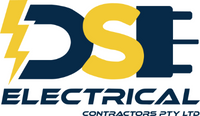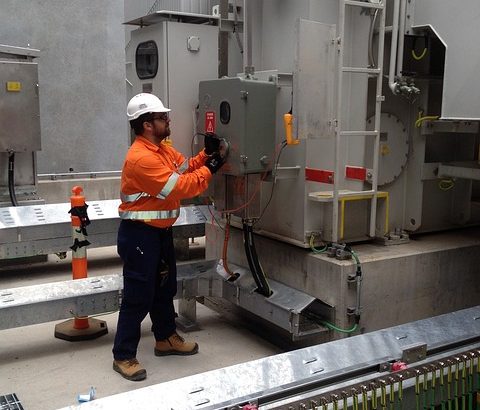The Rules on Electrical Testing and Tagging
Nothing is easy when it comes to ensuring a safety electrical environment. The risks of hazards are always around the corner especially whenever portable electronic equipment are on disposal. That is why there is a need for electrical testing and tagging. Faulty portable electronic equipment can cause problems such as burns, shocks and even electrocutions and electrical fires. However, identifying flaws around this portable equipment are not as hassle-free. Several issues are not visible enough leaving it unattended and unfixed.
This is why the procedure of electrical testing and tagging becomes so important as they significantly improve the electrical safety of the workplace in a much legal manner. With testing and tagging, the equipment is thoroughly scrutinized to identify any existing problems and to subsequently create a checking schedule. The tagging process is the way to record the inspection and testing of electrical equipment.
The rules on electrical testing and tagging
Who can test electrical equipment?
Only competent persons can be appointed to do the testing and tagging procedures on electrical equipment. Competent persons include those that are licensed and skilled to do electrical jobs and have undergone training and have earned knowledge and skills from qualifications and experience. These competent persons are usually the electricians or electrical service technicians.
What are the issues involved in inspection and testing of equipment?
Not all electrical items are subjected to inspection and testing. The nature and regularity of inspections and testing will vary depending on the risks related to the electrical equipment and the nature of the workplace.
The common issues involved in the procedure are:
- Inspection of apparent damages, defects or alterations to the electrical equipment including its accessories, plugs, connectors and cord extension sockets
- Inspection of discolouration or tarnishing that may be a sign of exposure to moisture, chemicals or excessive heat
- Inspection of damaged flexible cords, faults in the wiring, current leakages and safety switches that do not trip
- Inspection of the integrity of protective earth and insulation resistance
- Inspection of the flexible cords and if they are successfully anchored to equipment, connectors, plugs and cord extension sockets
- Inspection of the controls if they are in good working condition such as if they are aligned, secured, properly identified and ready for use
- Inspection of ventilation inlets and exhausts if they are clear and open
- Inspection of covers, guards and if they are secured and working within the purpose intended by the supplier or manufacturer
- Inspection of the current rating of the plug if it matches the current rating of the associated electrical equipment.
When should electrical equipment be tested?
Electrical equipment should be inspected and tested after a repair or servicing that could remarkably affect the electrical safety of the equipment. Also, electrical equipment that is bought second-hand should be inspected and tested before its first use.
What equipment should undergo electrical testing and tagging?
Equipment in lower-risk environments such as photocopiers, computers and any other fixed or stationary electrical equipment have no mandated inspection and testing or tagging process associated with them. However, there are certain instances when a company or compliance party will incorporate inspection and testing of this lower-risk operating environment equipment as part of their overall risk management approach. Also, the manufacturer of this electrical equipment oftentimes recommends inspection, testing and tagging procedures for their products.
Brand new electrical equipment that has never been put into use does not require to be tested before its first use. However, they should be visually inspected to guarantee that there are no damages made during the transfer, delivery, commissioning and installation.
For electrical equipment that is required to be regularly tested for safety purposes, make sure that necessary steps have been taken to ensure that they do not miss their first required test. There should be a proper record of the dates when the electrical equipment was placed into service. This equipment should also carry tags that state:
- That electrical equipment is “new to service”
- Date of entry into service
- Date when the first electrical safety test is due
- That the equipment has not undergone testing
On the other hand, electrical equipment in higher-risk workplaces requires regular inspection and testing. These electrical equipment include those that are supplied with electricity through an electrical socket outlet and those that are exposed to operating conditions such as exposure to moisture, vibration, heat, mechanical damage, dust and corrosive chemicals. The general rule states that this equipment should undergo testing at least once every 12 months. In addition, electrical equipment used in manufacturing and workshop equipment and commercial cleaning equipment should be tested once every 6 months. Hire equipment should be inspected at the commencement of each hire and tested every three months.
The tagging procedure
Right after an inspection and testing, the electrician will place a test on the equipment. The tag should carry all information such as who performed the test, the date of testing, the result of testing and the date on which the next testing should be carried out. The tag should be durable, non-metallic, water-resistant, self-adhesive, and well-secured, has a clear, distinctive surface and is not capable of re-use. Tags can also come in color-codes to classify the month in which the testing has been carried out. However, a tag cannot carry all of the required information regarding the inspection and testing process. In this case, there should be a separate record that can be in the form of database, logbook or register that should be kept for the relevant period of time.
Dan Stone Electrical is licensed to Tag & Test – if you need anything done; please give me a call on 0403 026 531.
Read this article What is The Difference Between an Electrician and an Electrical Contractor?


Recent Comments